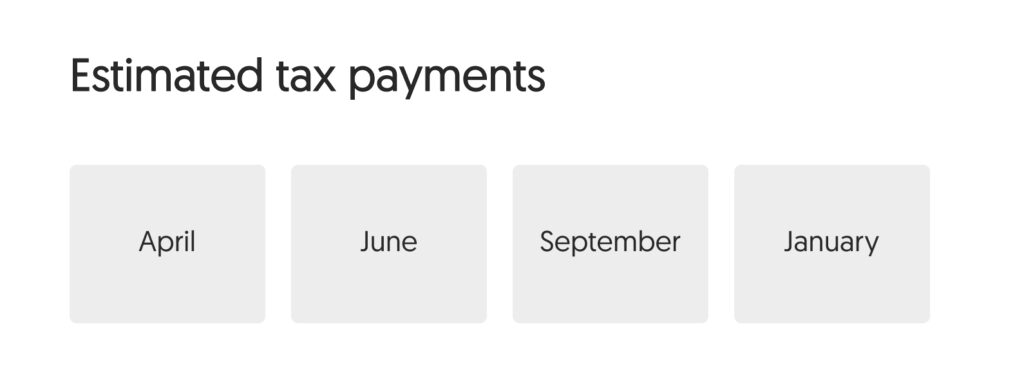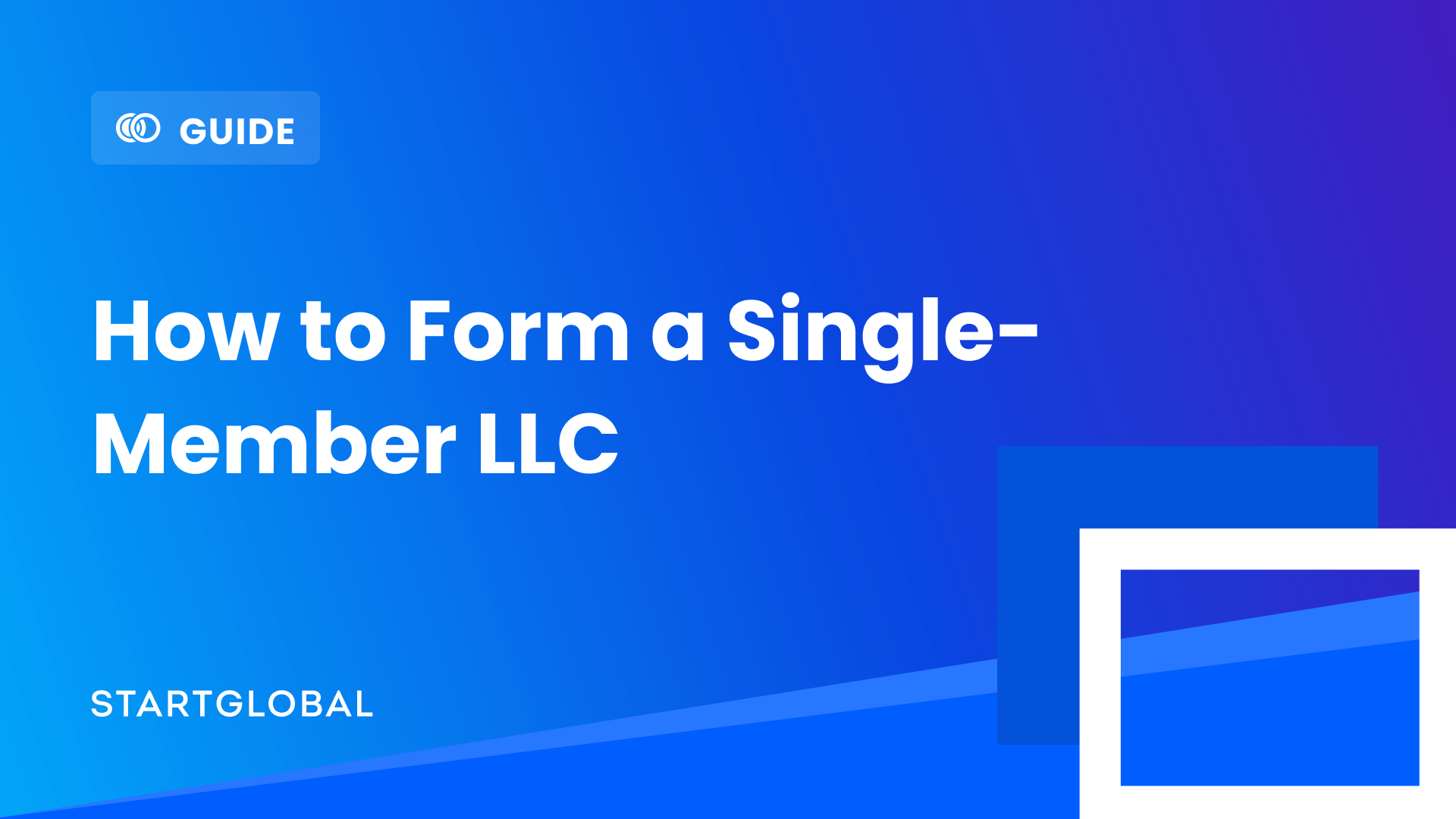Single-Member LLC
Single Member LLC is a type of an LLC(Limited Liability Company) that’s formed by a single person.
It’s a hugely popular entity among small business owners.
In this guide, you’ll find all the inner workings of a single member LLC, how it is taxed, how is it different, all of that.
Let’s start with an overview:
Definition
What Exactly Is An LLC?
LLC is a business entity that’s formed under the state statute. People choose an LLC for its limited liability and pass-through income.
What’s this limited liability, you ask? It is a protection that separates the owner’s personal assets and the LLC’s assets in the event of lawsuits or other major debts.
So, when something goes south, and your LLC is being sued, your personal assets remain protected.
This means the owner is not personally liable for the LLC’s debts and obligations. Not all the time, but in most cases.
Now, coming to single-member LLC. As the name suggests, it is an LLC with only a single member.
Pretty straightforward.
Ownership of a Single-Member LLC
Can Anyone Own a Single-Member LLC?
A single-member LLC can have only a single member. No surprise there!
Though it is called a ‘single’ member LLC, a member can be any one of the following:
- An individual,
- A partnership,
- A corporation
- Another LLC
- Foreigner/foreign entity
In most cases, you would find a single individual to be the owner of a single-member LLC.
If there are 2 or more people who plan to start an LLC together, you should take a look at a multi-member LLC.

For non-residents
Non-residents can form single-member LLC in the US with ease. It can be owned by a foreign entity or even a foreign individual.
Sole Proprietorship
Are Single-Member LLCs & Sole Proprietorship The Same?
Single-member LLCs & sole proprietorships are similar in many ways.
IRS treats them the same. So, the income taxes for them are the same.
They both have only a single owner.
The most crucial difference between them is that LLC offers liability protection, whereas sole proprietorship does not. Meaning: owners of an LLC are not personally liable for business debts. But in a sole proprietorship, owners are personally liable.
This protection offers a lot of relief to LLC owners.
And that’s why single member LLC is seen as the natural next step for people who are already running sole proprietorships.
Taxes
What Are My Tax Obligations?
Even though personal and business assets are considered separate due to the limited liability, the owner and the LLC are NOT considered separate from a tax point of view.
IRS treats the single-member LLC as a part of the owner’s tax returns and is ‘disregarded’ as a separate entity.
That’s why single-member LLCs are also called disregarded entities.
This is exactly like how the IRS treats sole proprietorship.
There are two ways an owner can choose to be taxed in a single-member LLC:
Disregarded entity
- By default, single member LLC is treated as a disregarded entity i.e, the owner and the LLC are considered the same.
- The member pays income taxes on the LLC’s income, not the LLC’s.
LLC as a corporation
- By filing Form 8832, a single-member LLC can be treated as a corporation, i.e., the owner and the LLC are considered separate.
- LLC pays income taxes on its income, not the member. Just like a C-corp, taxes are paid at the corporate tax rate, which is lower than most personal income tax rates.
In this guide, we’ll mostly be dealing with disregarded entities. Read our guide below for a detailed look at LLCs treated as a corporation.
Pass-through income
A disregarded entity is a pass-through entity.
What does that mean? LLC’s business income is passed on to its owner and is not taxed at the LLC’s level. Tax is paid only once at the owner’s level.
You don’t end up in a situation where the LLC pays tax on its income, and after that money is transferred to the member, it is taxed again as personal income.
That’s how a disregarded entity avoids double taxation.
Tax reporting
IRS does not treat a disregarded entity as separate from its owner.
So, for income tax purposes, IRS treats the LLC just like it treats its owner.
And the single owner can be a single individual, a corporation, a partnership, or even another LLC.
When the disregarded entity’s owner is a single individual*, IRS treats it like a sole proprietor.
- Income and losses of such an entity are reported on the single owner’s Form 1040 — US Individual Tax Return.
- The owner’s Social Security Number (SSN) is used while paying taxes.
When the single owner is a partnership, corporation, or another LLC, IRS treats the LLC as a branch or division of the owner.
- Income and losses are reflected on the owner’s federal tax return.
- Owner’s EIN is used while paying taxes, not the LLC’s EIN.
This way, a disregarded LLC doesn’t have to file income tax returns. Only the owner does.
Employment taxes
There’s a slight difference here in how the LLC is treated for employment tax purposes.
Before it gets confusing, let’s recap a little.
For income tax purposes, IRS does NOT consider a disregarded entity separate from its owner.
However, when it comes to certain employment taxes and excise taxes, the owner and the LLC are considered separate.
That’s why you use the EIN of the LLC, not the owner’s EIN or SSN, for certain employment taxes and excise taxes.

Department of the Treasury(TREAS)
Section 301.7701-2(c)(2)(i) of the regulations states that, except as otherwise provided, a business entity that has a single owner and is not a corporation under 301.7701-2(b) is disregarded as an entity separate from its owner (a disregarded entity). However, the regulations also treat a disregarded entity as a corporation for purposes of taxes imposed under subtitle C (employment taxes).
Question: Do I have to pay employment taxes when I have no employees?
Answer: Some yes, some no.
- If you have employees — payroll taxes + self-employment taxes
- If you have no employees — self-employment taxes
Let’s understand these taxes a little more.
Payroll tax
If the LLC has an employee, it will have to pay payroll taxes on the wages paid. These payroll taxes are social security tax, medicare taxes, and unemployment insurance.
Who pays this tax, the member of the LLC? LLC.
However, half of this tax amount is collected from the employee’s paycheck. Only the other half is contributed by the LLC.
The amount that the employee has to pay is withheld by the LLC when issuing paychecks.
FICA tax(Social Security & Medicare) – The employer portion is 6.2% for Social Security and 1.45% for Medicare. LLC withholds the same amount from the employee’s paycheck as well
FUTA tax – It covers unemployment insurance. Of the total amount of 6%, states usually have a 5.4% credit. The other 0.6% is paid by the employer.
Self-employment tax
This is kind of like payroll taxes, but paid by the members.
The member doesn’t have a paycheck since he/she is considered ‘self-employed.’ So, this tax cannot be withheld by the LLC when money is withdrawn. It’ll have to be paid separately by the member.

For non-residents
US non-residents who own an LLC don’t have to pay self-employment taxes.
How to pay all these taxes?
Whether it is income tax, payroll tax, or self-employment tax, all the taxes in a single-member LLC are paid as estimated taxes to the IRS.
What’s this estimated tax, you ask?
Estimated tax payment is the method of splitting up your total annual tax amount into four quarterly payments. Instead of paying all your taxes in one shot, you break it into four installments.
So, you have to estimate your income ahead of time and pay taxes on them at the end of a quarter — in April, June, September, and January.

IRS is pretty serious about this.
They charge a penalty if you fail to pay an installment or pay it late.
So, keep this in mind.
Also, if you’re just starting up or if you haven’t earned any income during a quarter, you can skip an installment entirely.
Pay Yourself
How Do I Pay Myself From An LLC?
Alright, time to discuss how you can pay yourself in a single-member LLC.
Member’s draw
For a disregarded entity, the member can take out money from the LLC in almost any amount. This is known as a member’s draw. Many single-member LLC owners use this as an alternative for salary and dividends.
Though the member has the flexibility to draw any amount, there are some state laws that impose legal limitations that prevent the member from drawing way too much.
Unlike a salary paycheck, the LLC doesn’t need to withhold tax for social security and Medicare from this withdrawal.
Salary and dividends
For a disregarded entity, it is not possible for a member to take a paycheck nor get paid through dividends.
However, if the Single member LLC is elected to be treated as a corporation, the member can get a monthly paycheck and/or dividends.
If you’ve elected to be treated as a corporation, you’re almost legally required to consider shareholders as employees.
Note
It’s important not to mix your personal expenses with your business expenses. You’ll risk piercing the protection you get from having limited liability.
Hiring
Can I Hire Employees In An LLC?
There is no issue in hiring employees in a single-member LLC.
The only limitation is that the LLC cannot hire the member as an employee. That’s all.
There are a few responsibilities with hiring employees:
- LLC has to withhold tax from the employee’s wages for Social Security, Medicare and unemployment insurance, deposit it with the IRS and state agencies.
- LLC has to file Form W-2 for each employee with the IRS.
- Depending on the state you’re in, LLC has to notify state and local authorities about the new hires.

For non-residents
If a non-resident-owned LLC has an employee living in the US, you would have to start paying payroll taxes. If you wish to avoid having to pay payroll taxes, you can hire independent contractors or freelancers. The law asks you to pay taxes if you have a ‘dependent agent’ in the US. How to establish ‘dependence’ is a slightly complicated area. It is best to speak with a lawyer regarding this.
LLC Formation
How To Form Your Single-Member LLC?
Here are 7 steps to give you a basic understanding of how to form a multi-member LLC.
- Choose a state of formation
- Pick a name and reserve it with your state before filing your LLC (optional)
- Nominate a registered agent
- Decide if the LLC is member-managed or manager-managed
- Draft an operating agreement
- Apply for EIN
- Open a bank account
If you wanna know more about the exact formation steps, read our step-by-step guide below.
FAQ
Frequently Asked Questions About Forming A Multi-Member LLC
Here are the most commonly asked questions about forming a Single-Member LLC business:
A disregarded entity is a term used to refer to entities that are not considered separate from their owner by IRS. By default, a single-member LLC is treated as a disregarded entity.








 CHAT WITH US
CHAT WITH US